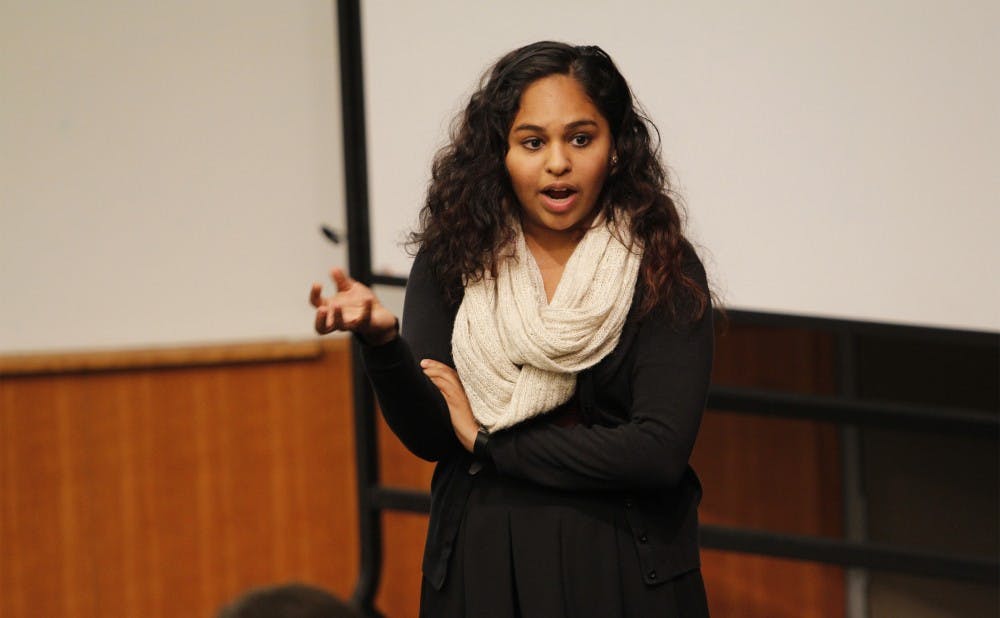Proposals introduced at Wednesday's Duke Student Government meeting may mean major changes are in store for the Senate.
The four proposals discussed during the meeting addressed Senate elections, committee fusion and Senate size. The first proposal suggests a new model for Senate elections, East, West and Central campuses were each divided into different constituencies according to residential blocks.
Right now, 12 DSG senators are elected from each graduating class.
“1,500 students is an absurdly large constituency,” said junior Keizra Mecklai, vice president for equity and outreach during the presentation. “Representation by residency will make the Senate more effective.”
This proposal hopes to bring the the number down to about two senators serving per 400 students.
“These senators live in your neighborhood, and you can find them very easily. They are all directly accountable to you,” said senior Nikolai Doytchinov—who is on a temporary leave of absence from the role of chief justice as he participates in the Young Trustee election.
This proposal also attempts to address the campaign difficulties faced by many students running for DSG office. The current election model requires that all candidates campaign across all three of Duke's residential campuses.
"With the new model, senators could easily reach independent house presidents, really address the residents and have a dialogue with them,” Doytchinov said.
The second proposal focuses on the merging of existing committees within DSG. Under the proposal the social culture committee and the residential life committee would be merged due to the overlap between their roles.
Social life on campus mainly concerns housing, dining and alcohol policies, which all fall under residential life, Vice President for Services Billy Silk, a junior, noted during the presentation.
In addition, the second proposal also recommends merging the facilities and the environment committee with the services committee. The proposal stemmed from limited existing space for projects on facilities issues like construction and renovations when the services committee already has overlapping projects with Fix My Campus and Duke University Student Dining Advising Committee.
The last two proposals suggest changes to the current Senate structure, including reducing the Senate size from 60 to 40 and matching senators with committees after election.
The new Senate would have 32 elected and eight at-large members, which could bring greater accountability and higher competitiveness to the body, Mecklai explained.
Echoing the representation by residency proposal, the new model would apportion senators to houses based on their size. In the proposed model, Duke would be divided into 14 constituencies: two on Central Campus, Crowell and Wanamaker, Craven, Edens, Few, Keohane, Kilgo, four on East Campus and off-campus representatives.
Among the four proposals, representation by residency received the most questions from the Senate—largely due to concerns of over and underrepresentation. The four proposals will be further discussed during the DSG internal affairs committee meeting Sunday.
In other business:
The Student Organization Funding Committee presented the budget for Duke East Asian Nexus and charity fundraising plans by Delta Sigma Theta.
Executive Vice President Abhi Sanka, a junior, presented changes to Senate election by-laws which were passed.
Get The Chronicle straight to your inbox
Sign up for our weekly newsletter. Cancel at any time.

